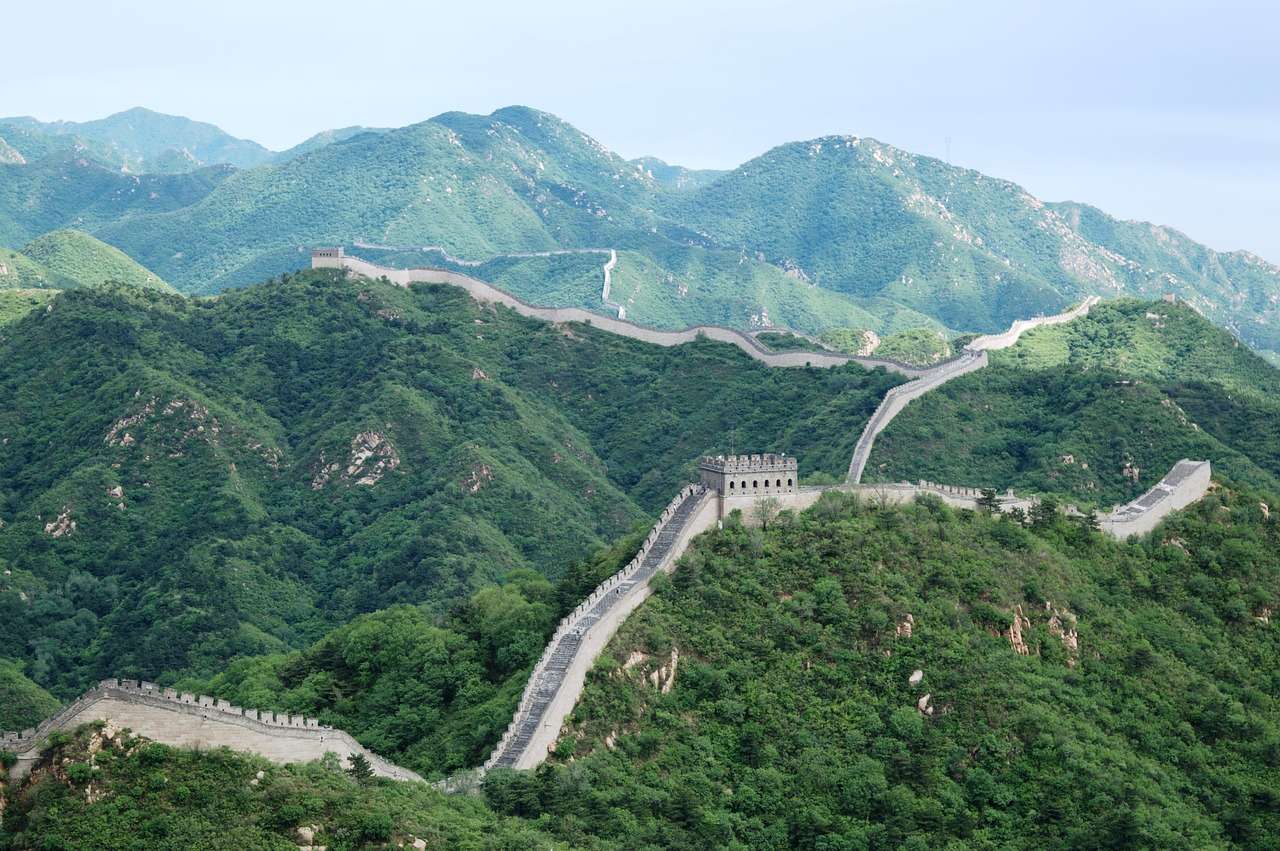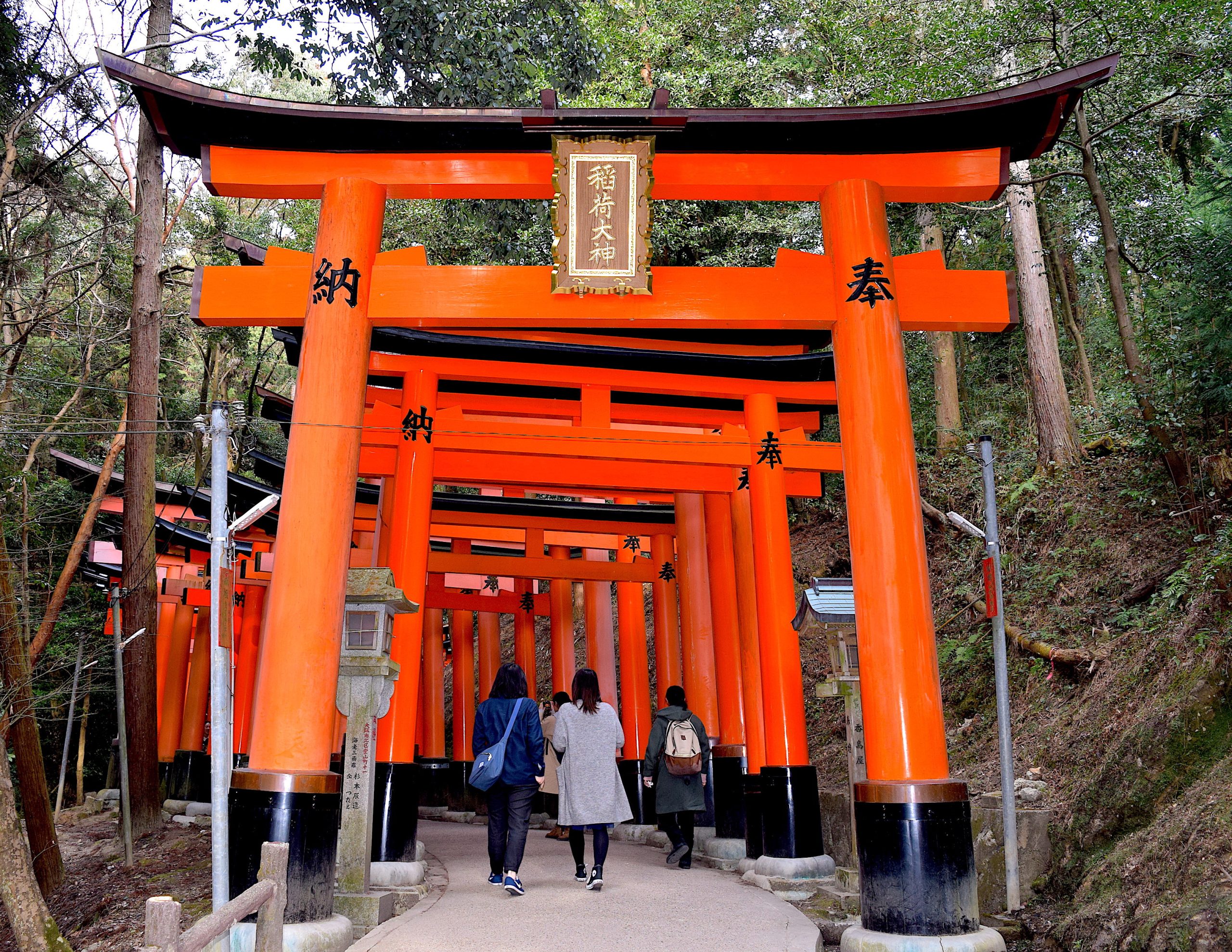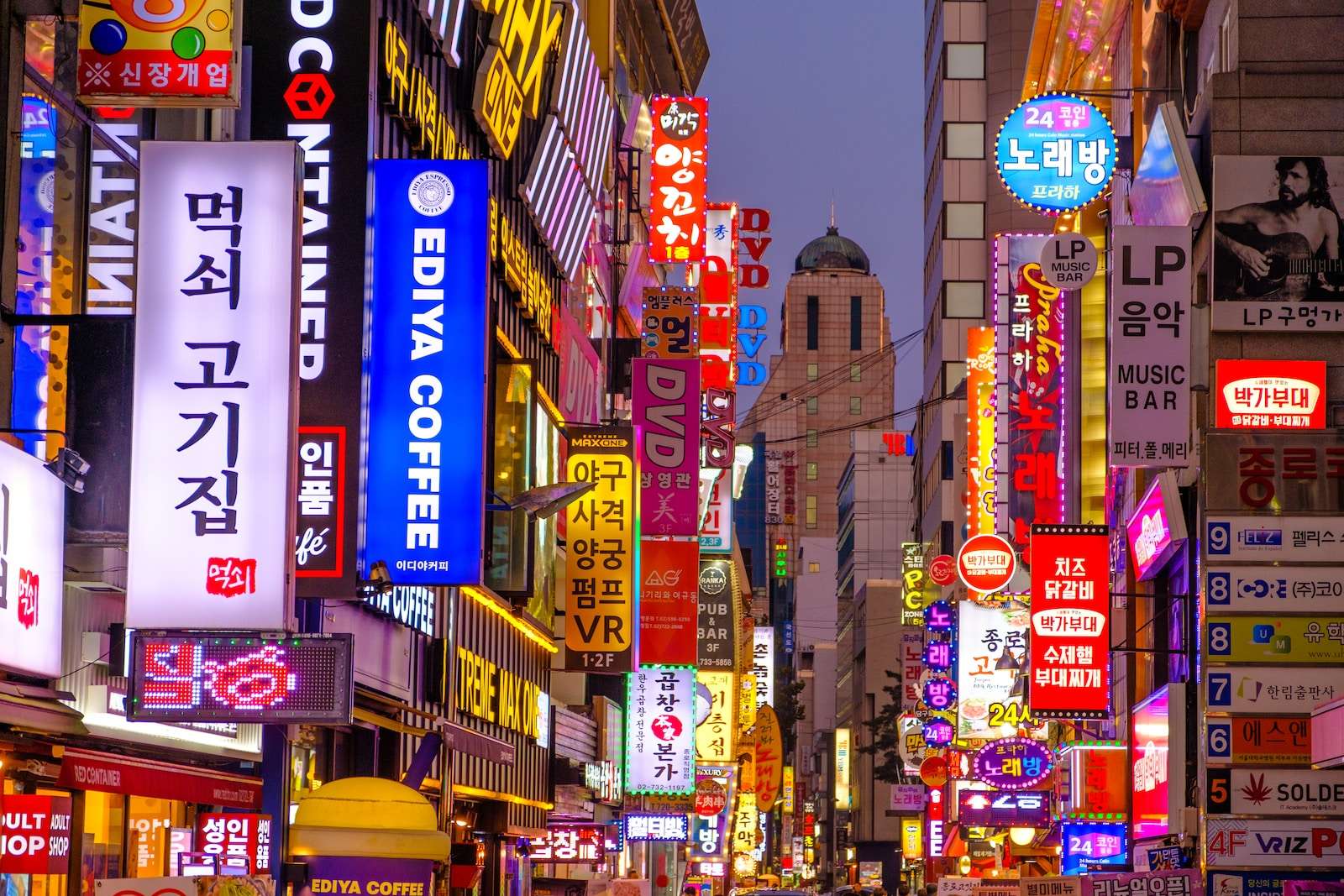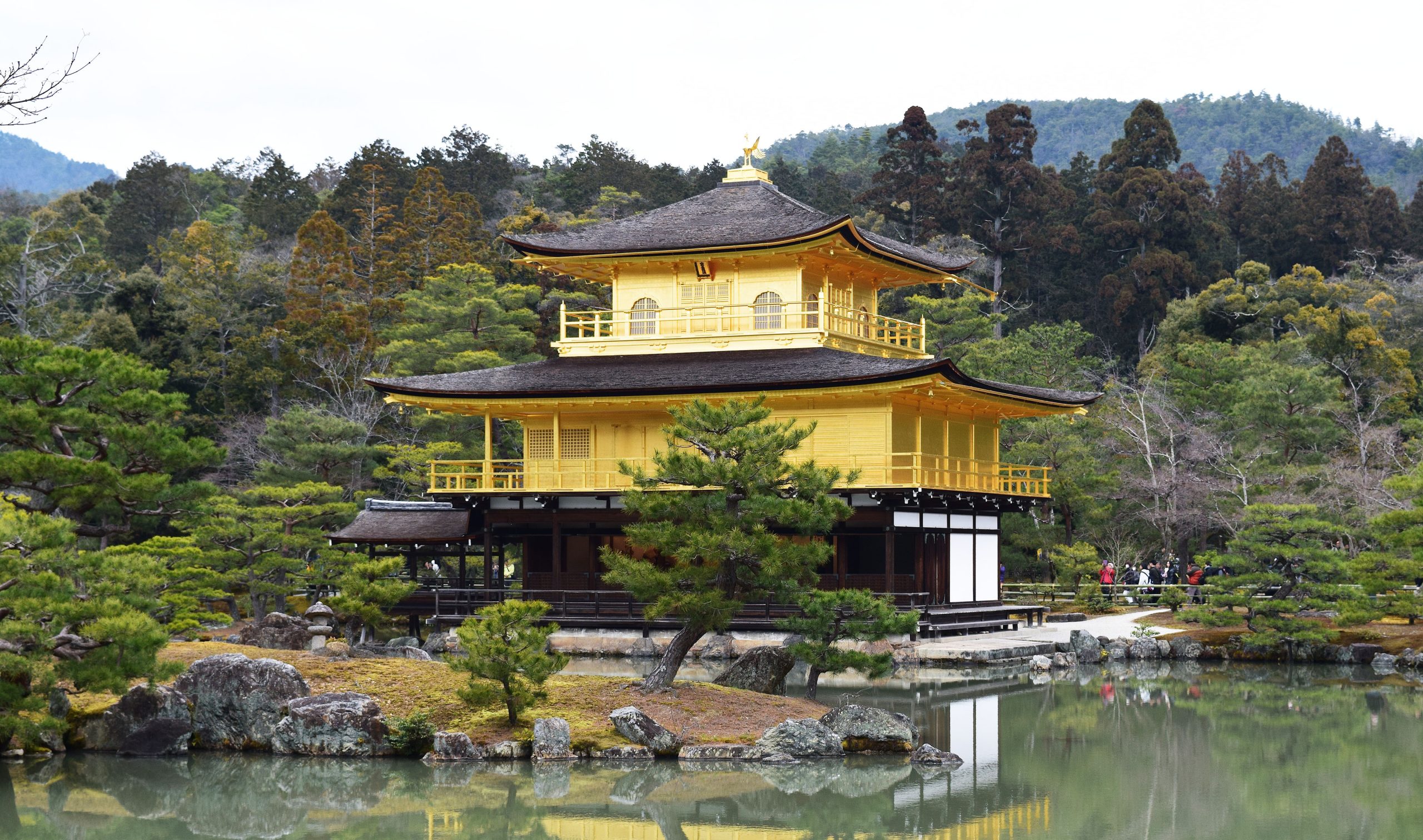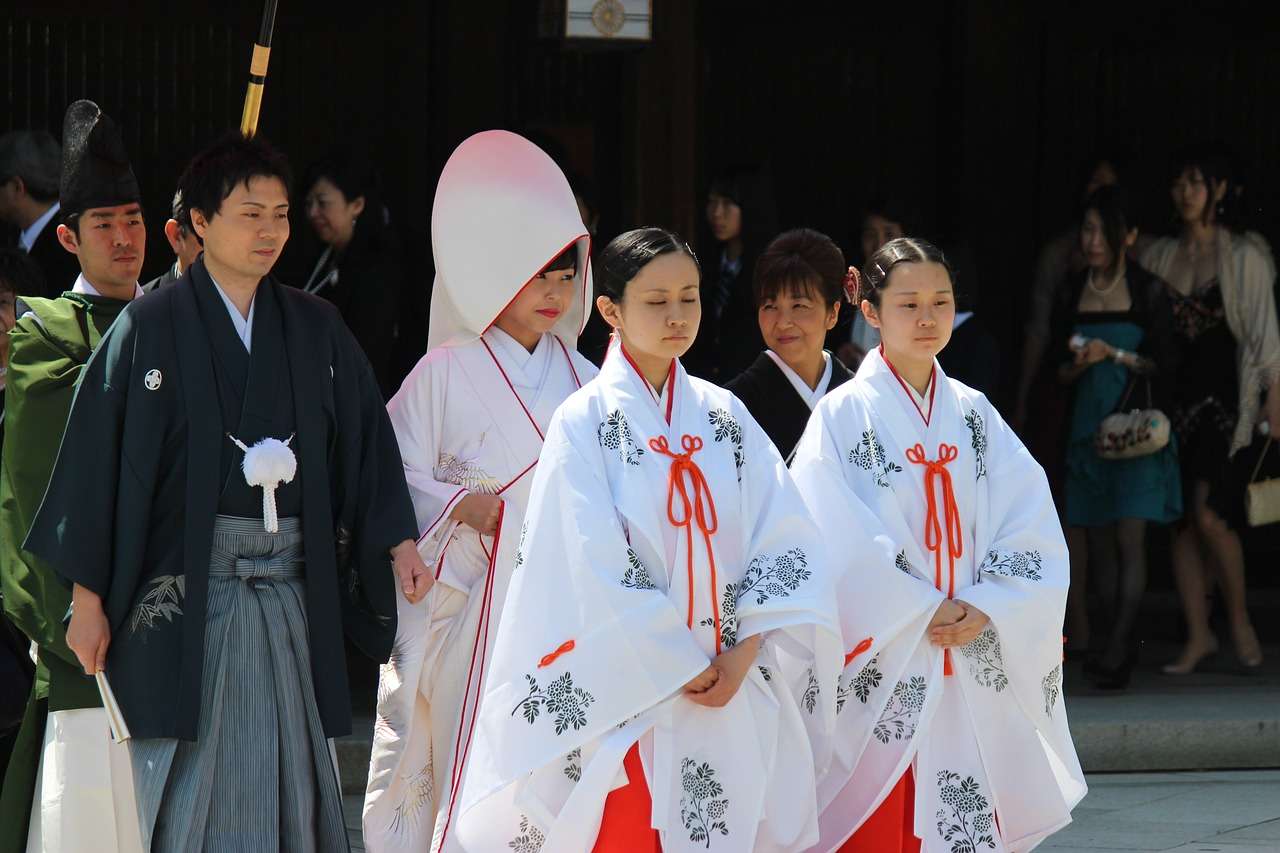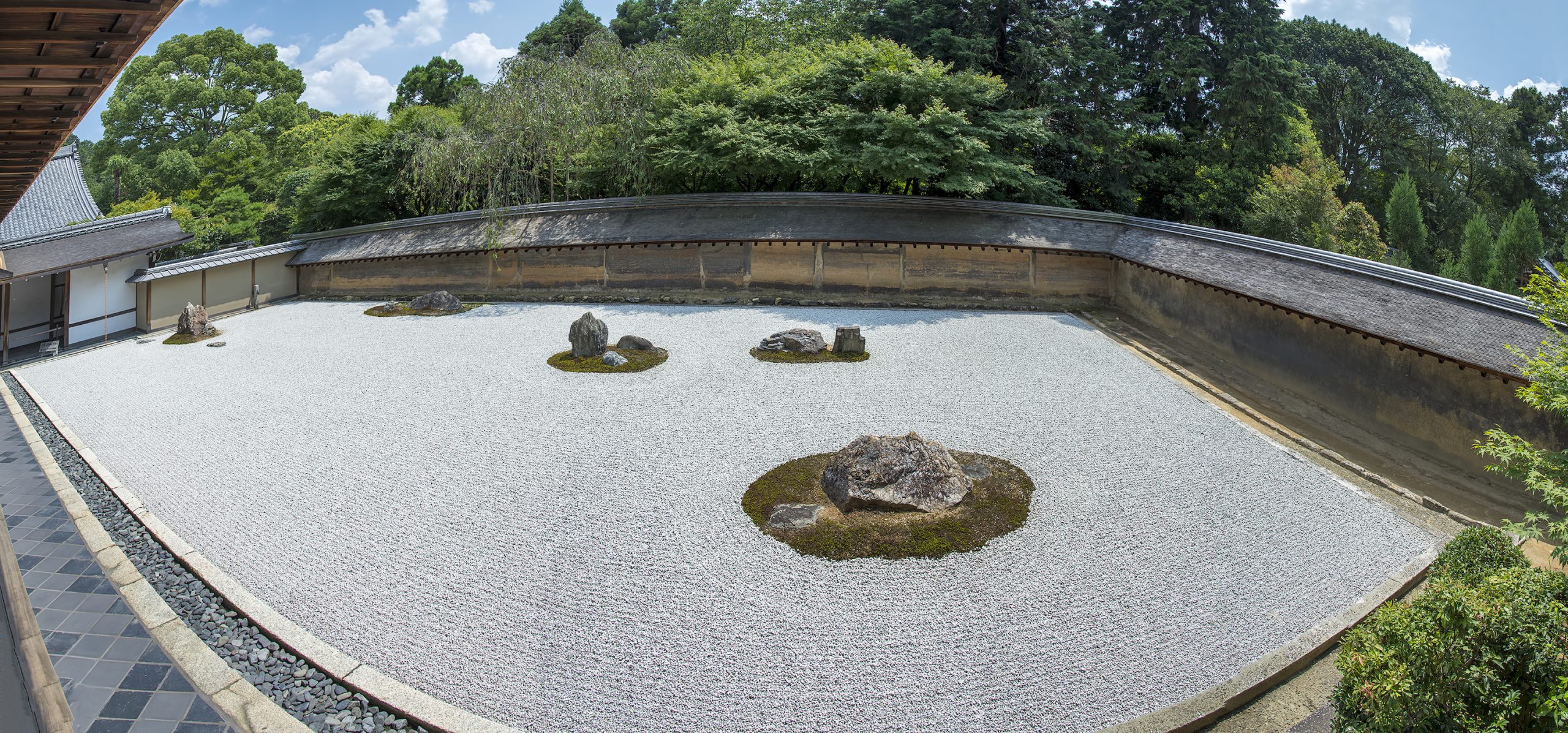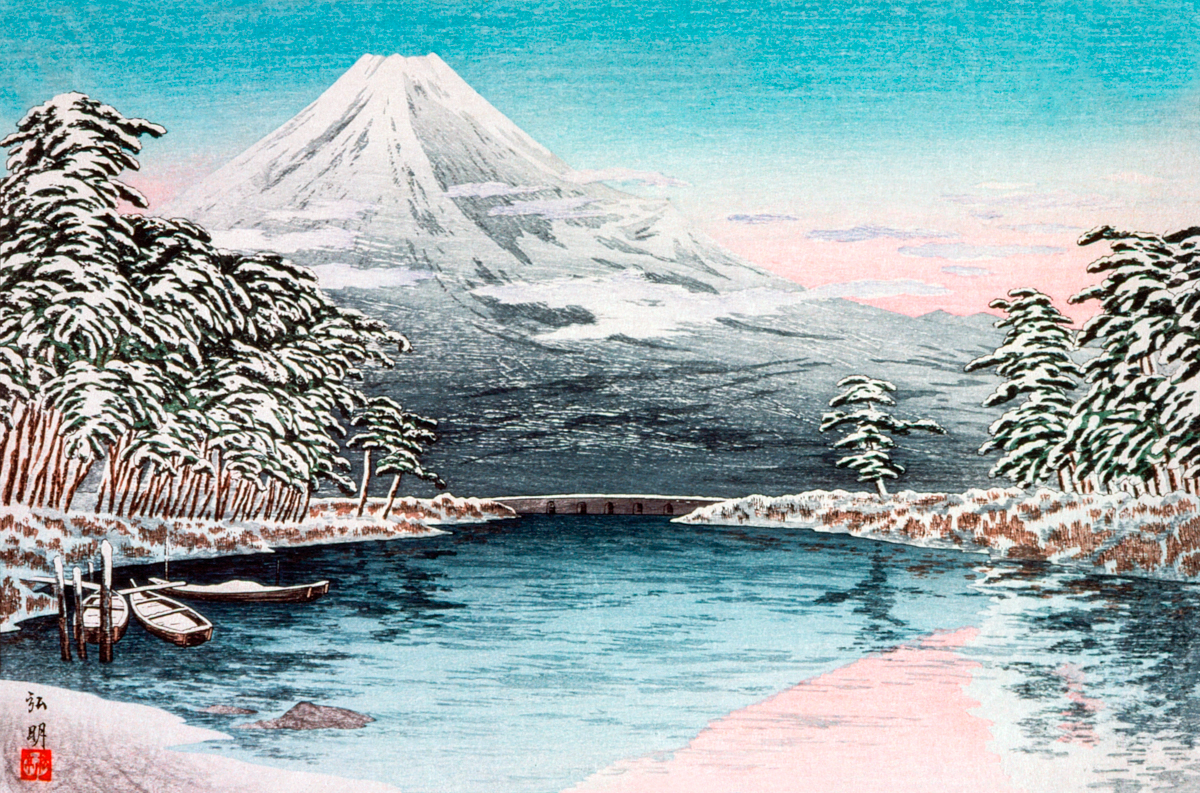I. Introduction
The Great Wall of China, often referred to simply as the Great Wall, stands as one of the most iconic and remarkable architectural feats in human history. This colossal fortification system, winding its way across China’s northern borders, has transcended its original purpose of defense and has come to symbolize the enduring spirit, engineering prowess, and historical legacy of the Chinese people. In this comprehensive article, we will delve into the rich tapestry of history, culture, and significance that encompasses this awe-inspiring structure.
A. Brief Overview of the Great Wall of China
The Great Wall, known in Chinese as “Chángchéng” (长城), stretches over 13,000 miles (21,196 kilometers), making it the longest wall in the world. This immense structure is not a single continuous wall but rather a network of walls, trenches, and natural barriers that were constructed and maintained over centuries. It traverses rugged mountains, vast deserts, and rolling plains, showcasing the ingenuity and determination of the builders who conceived and erected it.
The construction of the Great Wall can be traced back to various dynastic periods in Chinese history, with its origins dating as far back as the 7th century BC. Its creation and expansion were driven by a combination of military, strategic, and economic considerations. The Great Wall served as a bulwark against the frequent invasions from nomadic tribes to the north, such as the Xiongnu, Mongols, and others, and allowed for control over key trade routes like the Silk Road.
B. Significance of the Great Wall in World History
The significance of the Great Wall extends well beyond the borders of China. It holds a prominent place in world history as a testament to the ambition and resourcefulness of ancient civilizations. Its massive scale and enduring presence have captured the imaginations of people around the globe for centuries. It has been lauded as one of the most impressive architectural achievements ever realized by humanity and has earned a place on the list of UNESCO World Heritage Sites.
Furthermore, the Great Wall played a pivotal role in shaping the course of world events. Its existence and effectiveness in deterring invasions from the north allowed Chinese dynasties to flourish and develop their unique culture and civilization. The interactions between the Chinese and the diverse peoples beyond the wall facilitated the exchange of ideas, goods, and technologies, contributing to the global interconnectedness of ancient times.
C. Purpose of the Article
The purpose of this article is to provide a comprehensive exploration of the Great Wall of China, shedding light on its multifaceted history, cultural significance, and enduring legacy. By delving into its origins, construction methods, defensive features, and the various dynasties that contributed to its expansion, we aim to offer readers a deeper understanding of this iconic structure.
Furthermore, we will examine the Great Wall’s role in Chinese history, highlighting how it safeguarded the Chinese heartland from invasions and facilitated trade and cultural exchange. We will delve into the myths, legends, and cultural significance that have woven themselves into the fabric of Chinese society, making the Great Wall a symbol of national identity and unity.
As we traverse through time, we will also explore the decline and abandonment of certain sections of the wall, only to be followed by remarkable restoration efforts during the Ming Dynasty and beyond. We will investigate the controversies and misconceptions surrounding the Great Wall, addressing some of the myths that have persisted for generations.
Additionally, this article will shed light on the Great Wall’s contemporary significance, both as a major tourist attraction and as a symbol of modern China. We will discuss ongoing efforts to preserve and maintain this historic wonder in the face of modernization and development.
In conclusion, this article seeks to offer readers a comprehensive and enlightening journey through the history and cultural significance of the Great Wall of China. It is an exploration of a marvel that stands as a testament to human ingenuity and endurance, transcending its original purpose to become a global symbol of resilience and heritage.
II. Historical Context: Walls, Warriors, and Wandering Emperors
Welcome, history buffs and fellow time travelers, to the wacky world of ancient China! Today, we’re diving into the second part of our Great Wall adventure, and it’s all about the historical context. But don’t worry, we won’t be getting all stuffy and serious; we’ll be exploring these fascinating tidbits with a dash of humor. So, put on your time-traveling goggles and hop in!
A. Early Chinese Defensive Walls and Fortifications
Our story begins way back when ancient China was a collection of squabbling states. Picture this: you’re an ancient Chinese ruler, and you’ve got neighboring states that would love nothing more than to borrow some of your land without asking. What do you do? You build a wall, of course!
Now, these early walls weren’t quite the “Great Wall” we picture today. They were more like that picket fence you put up to keep your neighbor’s pesky cat out of your garden. But hey, they served their purpose!
These early defensive walls weren’t just about bricks and mortar; they were all about keeping out the riff-raff. They were like the bouncers of ancient China, making sure only the right people got in.
B. Emergence of the First Emperor’s Wall
Fast forward to the time of the First Emperor, Qin Shi Huang. Imagine a guy who really liked to have things his way. He’s the kind of ruler who, when he wants a wall, doesn’t just build a wall – he builds THE wall. Enter the “First Emperor’s Wall.”
Now, Qin Shi Huang wasn’t just about walls; he was all about unification. Picture him as the ultimate control freak of ancient China. He’s like the party planner who insists on choosing the playlist, the guest list, and the decorations – everything!
So, he decided to unite all those squabbling states under one banner. But to do that, he needed a wall, not just any wall, but a wall that would put all previous walls to shame. And that’s how the “First Emperor’s Wall” came to be.
C. Qin Dynasty and the Unification of China
The Qin Dynasty wasn’t just about walls; it was about the whole shebang – unifying China like a boss. Qin Shi Huang was the kind of guy who wasn’t content with his empire being a patchwork quilt of bickering states. He wanted it to be a smooth, unified tapestry. So, he got to work.
Imagine him as the ultimate collector of ancient China. He wasn’t just collecting stamps or coins; he was collecting states. His idea of diplomacy was more like, “Hey, you’re part of my empire now, whether you like it or not!”
But it wasn’t all about brute force; he was also a bit of a visionary. He standardized things like weights, measures, and even writing systems. It’s like he decided that ancient China was his giant LEGO set, and he was going to make sure all the pieces fit together just right.
Now, let’s talk about the wall. Qin Shi Huang didn’t just build it for fun; he had a reason. It wasn’t to keep out those pesky neighbors; it was to protect his newly unified empire from nomadic tribes to the north. Imagine it as the ancient equivalent of building a giant fence around your yard to keep out the neighbor’s unruly goats.
III. Construction of the Great Wall: Building the World’s Longest Brick ‘n’ Mortar Adventure Park
A. Role of Different Dynasties in Building and Expanding the Wall
First things first, we’ve got to talk dynasties. In ancient China, dynasties were like fashion trends – they came and went, each with its own take on the Great Wall. It’s like a long-running TV series where every season has a different showrunner.
The Great Wall’s construction wasn’t a one-dynasty wonder; it was a collaborative effort spanning several centuries and dynasties. It’s as if the Great Wall was the ultimate DIY project, and every dynasty wanted to leave its mark.
The Qin Dynasty, led by the First Emperor Qin Shi Huang, kicked things off with the “First Emperor’s Wall.” It was like they were the trendsetters, introducing the world to the idea of a ginormous wall. But the show didn’t stop there. The Han Dynasty came along and said, “We can’t let the Qin Dynasty have all the fun,” so they expanded the wall.
Then, enter the Ming Dynasty, the ultimate wall enthusiasts. They’re the ones responsible for the version of the Great Wall we see today, complete with those iconic watchtowers and snazzy fortifications. The Ming Dynasty’s wall was like the modern reboot of an old classic – bigger, better, and with more action sequences.
B. Materials and Construction Techniques Used
Now, let’s get down to the nitty-gritty – the materials and techniques that turned the Great Wall from a wild idea into a colossal reality.
First, let’s talk bricks – not the kind you find in your backyard, but massive, sturdy ones. The Chinese folks got creative with their bricks, making them out of everything from rammed earth to stone to wood. It’s like they went to the Lego store and said, “Give us all your bricks, we’re building a wall!”
But bricks alone don’t make a wall. You need mortar – that gooey stuff that holds it all together. Ancient China had its own recipe for this secret sauce, combining materials like rice flour, lime, and, sometimes, even sticky rice. It’s like they were baking a gigantic wall-shaped cake, but instead of frosting, they used mortar.
And speaking of secrets, the Great Wall had a few hidden tricks up its sleeve. Imagine those watchtowers as the ultimate lookout spots. They weren’t just for taking selfies; they were for spotting trouble from miles away. It’s like the Great Wall had its own version of a security system, complete with early warning bells.
C. Labor Force and Organization Behind the Wall’s Construction
So, who were the heroes behind this epic construction project? Well, it wasn’t just one guy with a shovel; it was a massive labor force that makes today’s construction sites look like sandcastles on the beach.
Picture this: You’re a worker on the Great Wall project, and your job is to haul giant bricks and mortar up steep mountainsides. It’s like the world’s worst game of “fetch.” But these workers were tough cookies, and they knew they were building something legendary.
Organization was key. The Great Wall had its own project managers, architects, and engineers – it was like a giant construction company, but with more swords and fewer hard hats. They had blueprints, schedules, and a dream of creating a wall that would go down in history.
But it wasn’t all work and no play. These construction sites were like bustling cities, with workers living in temporary camps, complete with their own mini-economies. They even had entertainment, like storytellers and musicians, to keep spirits high. It was like a never-ending party with a side of bricklaying.
And here’s the kicker – some of these workers weren’t just laborers; they were soldiers too. Yep, the Great Wall was like a two-for-one deal, providing both a defense against invaders and gainful employment. Talk about multitasking!
IV. Defensive Features: The Great Wall’s Epic Game of “Keep Out”
We’ve already tackled the historical context and the construction madness behind this colossal masterpiece. Now, get ready for the next level – the defensive features! But don’t worry, we’re going to keep the mood light and the humor flowing like a steady stream. So, grab your imaginary swords, and let’s dive into the epic game of “Keep Out” played by the Great Wall.
A. Watchtowers and Signal Stations
Imagine this: You’re on top of a tower, and your job is to spot trouble coming from miles away. You’re like the ancient version of a lifeguard at the beach, but instead of watching for sharks, you’re on the lookout for barbarian hordes.
These towers weren’t just any old towers; they were watchtowers, and they were strategically placed all along the Great Wall. It’s like the Chinese builders were playing a giant game of chess, with watchtowers as their rooks and knights.
But these towers weren’t just for gawking at the scenery; they were all about communication. They had signal stations on top, where soldiers could light fires or send smoke signals to alert the next tower down the line. It’s like ancient China had its own version of texting, but with a little more pyrotechnics.
And speaking of pyrotechnics, some of these towers were basically ancient firework launchpads. They could shoot flaming arrows or giant fireballs at invaders. It’s like they were playing a medieval game of Angry Birds, but with real danger and fewer pigs.
B. Moats, Trenches, and Natural Barriers
Now, let’s talk about the stuff that’s not as flashy but equally important – moats, trenches, and natural barriers.
Imagine the Great Wall as a gigantic castle, and these moats and trenches were the castle’s way of saying, “You shall not pass!” The Chinese builders didn’t just stop at the wall; they dug massive ditches and created natural obstacles to keep invaders at bay.
These weren’t your average moats; they were like the Grand Canyon on steroids. And if invaders somehow managed to cross those, they’d find themselves in a maze of trenches that made navigating a cornfield on a moonless night seem like a walk in the park.
But that’s not all – nature itself got in on the action. The Great Wall was built in some of the most challenging terrain on the planet. Imagine trying to invade China through the Gobi Desert or scaling the snow-capped peaks of the Himalayas. Mother Nature herself was like the Great Wall’s bouncer, saying, “You’re not on the list.”
C. Use of Weaponry and Military Strategies
Now, let’s get down to the fun stuff – weaponry and military strategies.
The Great Wall wasn’t just a pretty face; it had some serious muscle behind it. Soldiers stationed along the wall were armed to the teeth. They had everything from bows and arrows to crossbows and even those fancy repeating crossbows that would make Rambo jealous.
But it wasn’t just about the weapons; it was about strategy. Imagine the Great Wall as a giant chessboard, and the soldiers were the pieces. They had tactics like hit-and-run raids, ambushes, and surprise attacks. It’s like they were playing a never-ending game of hide-and-seek, only with way more danger.
And let’s not forget the ancient equivalent of the panic button – the signal fires. If things got dicey, soldiers could light signal fires on the watchtowers, sending a message down the line faster than you can say “911.” It was like the world’s first instant messaging system, with flames instead of emojis.
But the Great Wall wasn’t just about defense; it was about control. Imagine it as a giant velvet rope at a VIP club, and the Chinese dynasties were the bouncers. They controlled who got in and who didn’t. It’s like they were saying, “Sorry, barbarian hordes, you’re not on the list tonight.”
V. The Great Wall’s Role in Chinese History: More Than Just Bricks and Mortar
We’ve already journeyed through the historical context, construction, and defensive features of this colossal wonder. Now, it’s time to unravel the Great Wall’s role in Chinese history, and we promise to keep it as fun and whimsical as ever. So, fasten your seatbelts for another rollercoaster ride along the Great Wall of China!
A. Protection Against Invasions from the North
Picture this: You’re an ancient Chinese farmer tending to your rice paddies, and suddenly, you hear a thundering horde of nomadic warriors charging toward your village. What do you do? You run for cover, of course! But what if you had a giant wall standing between you and the barbarian horde? That’s where the Great Wall comes in.
One of the primary roles of the Great Wall was protection. It was like the ultimate bouncer at a club, keeping out unwanted guests. Those northern nomadic tribes, like the Xiongnu and the Mongols, were like party crashers trying to sneak in, but the Great Wall said, “Sorry, you’re not on the list.”
The wall wasn’t just a barrier; it was a psychological deterrent. Imagine you’re a barbarian warrior, and you see this colossal wall stretching as far as the eye can see. It’s like the Chinese builders were saying, “You really want to mess with us? Good luck with that!”
But it wasn’t just about keeping invaders out; it was about keeping China’s emperors in. The Great Wall was like a giant leash, making sure those emperors stayed put in their palaces instead of gallivanting off to conquer distant lands. It’s like they were saying, “No more world domination for you!”
B. Facilitating Trade and Cultural Exchange
Now, let’s talk about the flip side of the wall – trade and cultural exchange.
Imagine the Great Wall as a gigantic toll booth on the Silk Road. Merchants from all over the world wanted to trade with China, and the Great Wall was like, “Sure, but first, you gotta pay the toll.” It was like ancient China’s version of an ATM, where you could withdraw silk, porcelain, and spices.
But it wasn’t just about collecting tolls; it was about fostering cultural exchange. The Great Wall had these little windows called “wicket gates” where traders could pass through. It’s like they were saying, “Come on in, but leave the barbarian horde outside.”
Chinese culture wasn’t just confined within the wall; it spread like wildfire along the trade routes. Think of the Great Wall as the world’s first cultural ambassador, introducing Chinese art, cuisine, and philosophy to the world.
And let’s not forget the Chinese invention that changed the world – paper. The Chinese started making paper during the Han Dynasty, and guess what they used it for? Writing and painting on the Great Wall! It’s like they were creating the world’s first graffiti wall, but with poetry and calligraphy.
C. Symbolism and Cultural Significance
Now, let’s dive into the deep end of the Great Wall’s cultural pool – symbolism and significance.
The Great Wall wasn’t just a wall; it was a symbol of China’s indomitable spirit. It was like a giant middle finger to anyone who doubted China’s resilience. It said, “We can build the biggest, baddest wall in the world, and we can defend our homeland with gusto!”
But it wasn’t just a symbol of defense; it was a symbol of unity. The wall connected the disparate regions of China, bringing together people from different backgrounds and cultures. It was like the ultimate icebreaker at a party, making sure everyone mingled and got to know each other.
And speaking of parties, the Great Wall had its fair share of legends and myths. Imagine it as the world’s biggest game of telephone, where stories got passed down through generations. There are tales of heroic warriors, mystical creatures, and even ghostly apparitions haunting the wall.
The Great Wall also played a starring role in Chinese literature and art. It was like the Mona Lisa of ancient China, inspiring poets, painters, and storytellers for centuries. It appeared in countless scrolls, poems, and novels, becoming an integral part of Chinese culture.
So, there you have it – the Great Wall’s role in Chinese history, with a generous sprinkle of humor and imagination. It wasn’t just a wall; it was a guardian, a toll booth, a cultural ambassador, and a symbol of unity and resilience.
The Great Wall of China isn’t just a pile of bricks and mortar; it’s a living testament to the enduring spirit of the Chinese people. It’s a reminder that even in the face of adversity, humanity can achieve the extraordinary.
In our next thrilling episode, we’ll unravel the decline and abandonment of certain sections of the wall, only to be followed by remarkable restoration efforts during the Ming Dynasty and beyond. So, stay tuned, history buffs, as our hilarious and historical journey along the Great Wall of China continues!
VI. Great Wall’s Influence on Chinese Culture: Where Legends, Art, and Identity Meet
A. Legends and Folklore Associated with the Wall
Every great monument has its fair share of myths and legends, and the Great Wall is no exception. Picture this: you’re sitting around a campfire with ancient Chinese storytellers, and they’re regaling you with tales of the wall that go beyond bricks and mortar.
One of the most famous legends is about a woman named Meng Jiangnu. According to folklore, she wept so bitterly for her husband forced to work on the wall that her tears caused a section of the wall to collapse. It’s like the wall had a good cry and said, “Okay, fine, I’ll crumble.”
Then there’s the legend of General Meng Tian, who was said to have sacrificed his own son to appease the wall’s mythical guardian spirits. It’s like the Great Wall had its own demanding pet dragon that needed regular snacks.
And let’s not forget about those mystical creatures that supposedly guarded the wall. Ancient texts speak of dragons, phoenixes, and even lions that watched over the wall and protected it from harm. It’s like the wall had its very own menagerie of magical beasts.
B. Depictions in Chinese Art and Literature
Now, let’s talk about how the Great Wall became the muse for Chinese artists and writers throughout the ages.
Imagine the Great Wall as a supermodel of the ancient world – it was constantly being painted, sculpted, and written about. It’s like every artist wanted to capture its beauty and majesty.
In Chinese paintings, the Great Wall often appeared as a distant, winding line snaking its way through the landscape. It was like the wall was playing hide-and-seek with the artists, peeking out from behind mountains and disappearing into the horizon.
Poets couldn’t resist waxing lyrical about the wall either. It was like they were trying to outdo each other with flowery verses about its grandeur. They’d compare it to everything from a dragon’s spine to a celestial ribbon, turning it into a work of art with words.
Even in modern times, the Great Wall continues to be a muse for filmmakers, authors, and artists. It’s like the wall has a never-ending contract as the star of China’s cultural stage.
C. Impact on Modern Chinese Identity
Now, let’s fast-forward to modern times and talk about how the Great Wall has shaped modern Chinese identity.
The Great Wall isn’t just a relic of the past; it’s a living symbol of China’s rich history and enduring spirit. It’s like the Chinese people look at the wall and say, “We built this, and we’re still here.”
The wall has become a source of national pride, a reminder of the resilience of the Chinese people throughout the ages. It’s like a giant motivational poster that says, “If we can build this wall, we can conquer anything!”
In fact, the Great Wall has become a symbol of unity, bringing together people from all walks of life. It’s like a giant magnet that attracts tourists, historians, and adventurers from around the world, all eager to experience its magic.
And let’s not forget the role of the Great Wall in diplomacy. It’s like China saying to the world, “We have this amazing wonder, and we’d love to share it with you.” The Great Wall has become a bridge, connecting China to the rest of the world.
But it’s not all serious business; the Great Wall is also a source of humor and fun. Imagine tourists from around the world trying to take the perfect selfie with the wall as a backdrop. It’s like a global game of “Where’s Waldo?” but with more ancient architecture.
So, there you have it – the Great Wall’s influence on Chinese culture, with a pinch of humor and a sprinkle of imagination. It’s not just a wall; it’s a source of legends, a muse for artists and writers, and a symbol of modern Chinese identity.
The Great Wall of China isn’t just a historical relic; it’s a living, breathing part of China’s past, present, and future. It’s a reminder that even the mightiest of walls can’t contain the human spirit and its boundless creativity.
VII. Decline and Abandonment: The Great Wall’s Midlife Crisis and Ming Dynasty Makeover
it’s time to venture into the somewhat gloomy chapter of the wall’s history – its decline and abandonment. Fear not, we’ll keep the mood light and the humor flowing as we navigate the Great Wall’s midlife crisis and its stunning Ming Dynasty makeover!
A. Reasons for the Decline in the Wall’s Significance
Picture this: The Great Wall had been the coolest kid on the block for centuries, but suddenly, it found itself facing an existential crisis. Why, you ask? Well, it turns out that history had some new twists and turns in store.
First off, those pesky nomadic tribes to the north weren’t as menacing as before. The once-feared Xiongnu were no longer a major threat, and the Mongols had shifted their focus elsewhere. It’s like the Great Wall had been preparing for a rock concert, but the headliner canceled at the last minute.
Then there was the issue of technology. Advances in weaponry, like gunpowder and cannons, made the wall look a little outdated. It’s like the Great Wall had brought a sword to a gunfight – not the best strategy.
And let’s not forget the cost. Maintaining the Great Wall was like trying to feed an army of hungry giants. The constant repairs and garrisons drained the imperial treasury faster than a game of Monopoly with an overzealous banker. It’s like the Great Wall was the world’s most expensive home improvement project.
B. Neglect and Decay of the Wall During Certain Periods
So, what happened when the Great Wall hit a midlife crisis and started questioning its purpose? Neglect and decay, my friends.
During certain periods of Chinese history, the Great Wall was like that old shed in the backyard that no one pays attention to. It fell into disrepair, and nature started reclaiming its territory.
Imagine the wall covered in vines and moss, like an ancient ruin straight out of an adventure movie. It’s like the wall decided to let itself go a bit, growing a beard and wearing pajamas all day.
But it wasn’t just Mother Nature wreaking havoc; humans played a part too. Some sections of the wall were scavenged for building materials, like a giant recycling project. It’s like the wall became the ultimate source of free bricks and stones for nearby villages.
And then there were those times when the wall was just ignored. Dynasties came and went, each with its own priorities and projects. The Great Wall was like the forgotten stepchild at a family reunion, left to fend for itself.
C. The Ming Dynasty’s Restoration Efforts
Just when things were looking grim for our dear old wall, enter the heroes of the story – the Ming Dynasty! They weren’t about to let the Great Wall crumble into obscurity. No, siree!
The Ming Dynasty saw the Great Wall as more than just a pile of rocks; they saw it as a symbol of China’s strength and resilience. It was like the wall had found its fairy godmother, ready to wave a magic wand and make it fabulous again.
So, what did the Ming Dynasty do? They launched a massive restoration effort. It’s like the Great Wall got a full makeover – new bricks, fresh mortar, and even some fancy new watchtowers.
But the Ming Dynasty didn’t stop there; they took it up a notch. They built those iconic dragon-shaped crenellations on top of the wall. It’s like they decided the wall needed some bling to show off its newfound confidence.
And speaking of confidence, the Ming Dynasty made sure the Great Wall was fully manned and equipped. They stationed soldiers along the wall, ready to defend China’s northern borders. It’s like the Great Wall was no longer an aging rock star; it was back in the spotlight, headlining the concert of the century.
There you have it – the decline and abandonment of the Great Wall, followed by the remarkable restoration efforts of the Ming Dynasty. It’s a story of midlife crises, neglect, and ultimate redemption.
The Great Wall of China may have faced some rough patches in its long history, but it’s a testament to the resilience of the human spirit that it not only survived but thrived. It’s like the wall went through its own version of a Hollywood comeback.
VIII. UNESCO World Heritage Status: When the Great Wall Became the World’s Star Attraction
We’ve journeyed through the highs and lows, the legends and lore, and even the moments of neglect and resurgence. But now, it’s time for the curtain to rise on a new chapter – the Great Wall’s journey to UNESCO World Heritage status. Don’t worry; we’ll keep it light, fun, and, of course, a tad bit humorous as we explore how the wall became the world’s star attraction.
A. Recognition of the Great Wall’s Historical Importance
Imagine the Great Wall as a talented actor waiting in the wings, ready for its big break. Well, that break came when UNESCO (that’s the United Nations Educational, Scientific, and Cultural Organization) decided to give it the spotlight it deserved.
In 1987, UNESCO bestowed the title of World Heritage status upon the Great Wall, officially recognizing its historical importance to the world. It’s like the Great Wall got a golden ticket to the Oscars of world heritage.
But what does that mean, you ask? Well, it means the Great Wall joined an elite club of places like the Pyramids of Egypt and the Great Barrier Reef, all deemed essential to the world’s cultural and natural heritage. It’s like the Great Wall went from being an extra to the leading actor on the world stage.
This recognition wasn’t just about bragging rights; it was a big deal for conservation and preservation. It meant that the Great Wall was no longer just China’s responsibility; it was everyone’s responsibility to protect and cherish.
B. Conservation and Restoration Projects
Now, let’s talk about how the Great Wall got a makeover worthy of a Hollywood star.
After earning its UNESCO badge, the Great Wall wasn’t content with being a historical relic of the past; it wanted to be the best version of itself. So, conservation and restoration projects kicked into high gear.
Think of it as the Great Wall’s personal spa day. Crews of experts, like historical architects and conservationists, descended upon the wall armed with ancient blueprints and modern technology. They carefully inspected every nook and cranny, making sure the wall was looking its best.
But it wasn’t just about slapping on a fresh coat of paint. The restoration efforts were meticulous. Imagine the Great Wall as a patient on an operating table, and the surgeons were carefully repairing damaged sections, replacing bricks, and reinforcing weak spots.
And let’s not forget about the watchtowers; they got a facelift too. Some of them were in such disrepair that they were on the brink of collapse. But skilled craftsmen stepped in to restore them to their former glory, complete with dragon-shaped crenellations.
But it wasn’t just about aesthetics; it was also about preserving the wall’s historical authenticity. Imagine the Great Wall as an actor getting ready for a period piece; the goal was to make sure it looked and felt like it did in ancient times.
C. Tourism and Economic Impact
Now, let’s talk about the economic impact of the Great Wall’s UNESCO status.
The Great Wall didn’t just get a makeover; it became a superstar on the tourism scene. It’s like the wall went from being an underground indie band to a chart-topping sensation.
Tourists from all over the world flocked to see the Great Wall in all its restored glory. It became a bucket-list destination for travelers, history buffs, and adventurers alike. It’s like the Great Wall opened its own theme park, complete with souvenir shops and selfie spots.
But it wasn’t just about the selfies; it was about the economic boost. The Great Wall’s UNESCO status had a ripple effect on the local economy. Think of it as the wall inviting all its A-list friends to the party – hotels, restaurants, and tour operators all flourished thanks to the influx of tourists.
And let’s not forget about the cultural exchange. The Great Wall became a meeting place for people from all corners of the globe. It’s like a giant international potluck dinner, where everyone brought a piece of their culture to share.
There you have it – the Great Wall’s journey to UNESCO World Heritage status, with a dash of humor and imagination. It’s a story of recognition, conservation, and the economic impact of becoming a world-famous attraction.
The Great Wall of China didn’t just become a UNESCO World Heritage site; it became a global icon. It’s a reminder that history isn’t just about the past; it’s about the future and the generations to come.
In our next thrilling episode, we’ll tackle some of the myths and misconceptions that continue to swirl around the Great Wall, from the idea that it’s visible from space to debates about its actual length. So, stay tuned, truth-seekers, as our hilarious and historical journey along the Great Wall of China marches on!
IX. Controversies and Misconceptions: Separating Fact from Fiction in the Great Wall Saga
We’ve laughed, we’ve learned, and we’ve marveled at this colossal wonder. But now, it’s time to roll up our sleeves and tackle some of the controversies and misconceptions surrounding the Great Wall of China. Don’t worry; we’re armed with humor, curiosity, and a dash of skepticism as we separate fact from fiction in this epic saga.
A. Myth of the Wall Being Visible from Space
Ah, the classic myth that’s been circulating for ages – the idea that the Great Wall is visible from space. It’s like the wall’s superpower, right? Well, not quite.
Let’s break it down: The Great Wall is an impressive feat of human engineering, no doubt. But space is a vast, almost incomprehensible expanse. The notion that you can spot a relatively narrow, snaking line of bricks from hundreds of miles above Earth is like trying to find a needle in a haystack the size of Texas.
In reality, astronauts have reported that the Great Wall is not visible to the naked eye from low Earth orbit. It’s like trying to spot a tiny ant crawling across a football field while you’re standing on the Moon.
So, where did this myth come from? Well, blame it on a misinterpretation of a statement by the astronaut Yang Liwei, China’s first man in space. He mentioned that parts of the wall are visible from space with the aid of binoculars. But here’s the kicker – you can see a lot of things on Earth with binoculars from space, not just the Great Wall. It’s like saying you can spot a single grain of rice in a bowl of rice using a magnifying glass.
B. Debates Over the Actual Length of the Great Wall
Now, let’s dive into the Great Wall’s ever-elusive length. How long is it really? Well, that’s a bit of a head-scratcher.
You see, the Great Wall isn’t one continuous, unbroken structure; it’s a series of walls and fortifications built by different dynasties over centuries. It’s like a patchwork quilt made by a bunch of different grandmas with varying sewing skills.
So, when people debate the length of the Great Wall, they’re often arguing over which sections should be included. Do you count the northern walls built during the Ming Dynasty? What about the earlier walls constructed by the Qin Dynasty? And what about the crumbled bits in between?
To make matters even more confusing, the Great Wall isn’t just a wall; it’s trenches, natural barriers, and even rivers in some places. It’s like trying to measure the length of a river with all its twists and turns.
Official estimates put the length of the Great Wall at around 13,170 miles (or 21,196 kilometers for our metric friends). But some scholars argue that if you consider all the variations and lost sections, it could be even longer.
In the end, it’s like trying to measure a dragon from its nose to its tail – you’ll get different answers depending on who you ask.
C. Modern Debates About Preservation vs. Development
Now, let’s fast-forward to modern times and the ongoing debate about preserving the Great Wall versus promoting development.
Imagine the Great Wall as a wise old sage, caught in the middle of a heated family argument. On one side, you have those who argue for preservation – keeping the wall pristine and untouched, like a precious relic. They say, “Hands off! Let’s keep it just as it was in ancient times.”
On the other side, you have proponents of development – those who see the Great Wall as an economic powerhouse, a tourist attraction that can bring prosperity to local communities. They say, “Let’s build hotels, shops, and attractions to accommodate the hordes of tourists.”
It’s like a battle of the ages – tradition versus progress, culture versus commerce. And the Great Wall is right in the middle, trying to balance its historical significance with its role in the modern world.
The truth is, it’s a delicate dance. Preservation is essential to maintain the wall’s historical integrity, but development can provide opportunities for the local economy. Finding the right balance is like trying to walk a tightrope while juggling flaming swords.
There have been cases where development projects have encroached on the Great Wall’s territory, and conservationists and historians have sounded the alarm. It’s like trying to put a shopping mall in the Louvre – you’d expect some uproar.
But there have also been efforts to strike that balance – creating visitor centers, improving infrastructure, and managing tourism in a way that respects the wall’s heritage. It’s like turning an ancient castle into a thriving museum while keeping its original charm.
There you have it – the controversies and misconceptions surrounding the Great Wall of China, with a hearty dose of humor and skepticism. It’s a story of myths debunked, debates ongoing, and a wall that continues to captivate the world.
The Great Wall isn’t just a relic of the past; it’s a living, breathing testament to the human spirit. It’s a reminder that history is not set in stone; it’s a dynamic, ever-evolving narrative.
X. Notable Sections of the Great Wall: Where Every Brick Tells a Tale
Now, it’s time to roll out the red carpet for the stars of the show – the notable sections of the Great Wall. Get ready for a whirlwind tour that’s equal parts informative and entertaining!
A. Description of Key Sections for Tourists and Researchers
Imagine the Great Wall as a grand buffet, with different sections serving up unique flavors of history and culture. Each section has its own personality and story to tell, making it a tantalizing feast for tourists and a treasure trove for researchers.
- Badaling: Ah, the superstar of the Great Wall sections! Badaling is like the Hollywood Walk of Fame for tourists. It’s the most visited and well-preserved section, making it perfect for those looking for a quintessential Great Wall experience. The views are breathtaking, and the souvenir shops are top-notch.
- Mutianyu: If Badaling is the Hollywood, then Mutianyu is the indie film festival of the Great Wall. It’s a bit quieter, a tad wilder, and offers a more rugged experience. The section is known for its lush greenery and picturesque surroundings. Plus, you can take a toboggan ride back down – it’s like the Great Wall’s own amusement park.
- Jinshanling: For the adventurous souls and researchers, Jinshanling is where the real magic happens. It’s like the secret chamber of the Great Wall, less crowded and more authentic. You can hike along its steep paths and marvel at its original architecture. It’s where you can truly connect with the wall’s history.
- Huanghuacheng: This section is like the James Bond of the Great Wall – it’s got a little bit of everything. You’ve got the wall, a stunning reservoir, and even underwater sections that emerge during low water levels. It’s like the wall’s hidden treasure waiting to be discovered.
- Jiayuguan: Now, if you’re willing to venture farther west, Jiayuguan is the place to be. It’s like the wild west of the Great Wall, far removed from the bustling crowds of Beijing. It’s known as the “Overhanging Great Wall” because of its unique structure that seems to hang from the cliffs.
B. Unique Features of Each Section
Now, let’s talk about what makes each of these sections stand out from the Great Wall crowd.
- Badaling: It’s known for its massive, impressive stone walls and watchtowers. Plus, it’s the closest section to Beijing, so it’s convenient for tourists with limited time.
- Mutianyu: Here, you’ll find a mix of restored and unrestored sections, offering a more authentic experience. The scenery is also breathtaking, with lush forests and rolling hills.
- Jinshanling: This section is all about its ruggedness and authenticity. The wall here is a bit more weathered and wild, and it’s a popular choice for hikers and photographers.
- Huanghuacheng: The unique feature here is the underwater sections that become visible during certain times of the year. It’s like a hidden gem waiting to be uncovered.
- Jiayuguan: This westernmost section is famous for its strategic location as a frontier fortress. The Overhanging Great Wall is a jaw-dropping sight, clinging to the edge of a cliff.
C. Stories and Legends Associated with Specific Sections
Of course, what’s a visit to the Great Wall without a sprinkle of legends and stories? Each section has its own tales to tell.
- Badaling: Legend has it that a young general named Qi Jiguang led the restoration efforts here during the Ming Dynasty. He was like the Great Wall’s personal trainer, turning it into a formidable defender.
- Mutianyu: This section has its own tale of a general named Xu Da, who supervised the construction. It’s said that he was a brilliant strategist and an all-around good guy who made sure the wall was well-built.
- Jinshanling: The legend here involves a soldier named Wu Guihua, who valiantly defended the wall against invaders. His story is like an action-packed Hollywood movie with a touch of romance.
- Huanghuacheng: This section is home to a story about Meng Jiangnu, the legendary woman who wept for her husband forced to work on the wall. Her tears supposedly caused a section to collapse, revealing the sacrifices of the laborers.
- Jiayuguan: Jiayuguan’s story is about a mythical creature called the “Jiuquan Dragon,” said to guard the Great Wall. It’s like having your very own dragon protector.
There you have it – the notable sections of the Great Wall, complete with their unique features and legendary tales. It’s a journey through history, culture, and nature, all wrapped up in one magnificent adventure.
The Great Wall of China isn’t just a wall; it’s a living, breathing testament to human ingenuity and resilience. It’s a reminder that history is not confined to textbooks; it’s etched into the very stones and bricks of this colossal wonder.
XI. The Great Wall in Modern Times: From Ancient Marvel to 21st-Century Superstar
It’s time to fast forward to modern times and see how this ancient wonder is still making headlines in the 21st century. Hold onto your hats, folks, because the Great Wall is about to show us it’s got some contemporary tricks up its… uh, bricks?
A. Tourist Attraction and Economic Significance
First things first, let’s talk about the Great Wall’s transformation into a tourism juggernaut. Imagine the Great Wall as an aging rock star who’s suddenly back in the limelight, performing sold-out shows and raking in the cash.
Since earning its UNESCO World Heritage status, the Great Wall has become a star attraction on the global tourism stage. It’s like the wall went from being a local garage band to headlining Coachella.
Tourists from all over the world flock to see the wall in all its restored glory. It’s like the Great Wall opened its own theme park, complete with souvenir shops and selfie spots. People come to soak up its history, enjoy breathtaking views, and snap photos that will make their Instagram followers green with envy.
But it’s not just about selfies and souvenirs; the Great Wall’s rise in tourism has a significant economic impact. Local communities near the wall thrive thanks to the influx of visitors. Hotels, restaurants, and tour operators are living the dream, with business booming like a fireworks show on Chinese New Year.
And speaking of Chinese New Year, the wall has become a must-visit destination during major holidays and festivals. It’s like the Great Wall is throwing a never-ending party, and everyone’s invited.
B. Use of the Wall in Contemporary Chinese Politics and Diplomacy
Now, let’s shift gears and talk about how the Great Wall has become a player in contemporary Chinese politics and diplomacy. Imagine the wall as a wise old sage, offering advice on matters of state.
In recent times, the Great Wall has played a symbolic role in Chinese politics. It’s like a prop in a political drama, used to convey messages of strength, unity, and national pride.
Leaders have been known to visit the Great Wall as a show of solidarity with their predecessors and as a way to connect with the nation’s history. It’s like a pilgrimage for politicians, a way to gain favor with the masses.
The Great Wall also serves as a backdrop for important diplomatic events. Imagine world leaders gathering at the wall for a summit, discussing global issues against the backdrop of this iconic monument. It’s like hosting a high-stakes poker game in a world-famous casino.
And let’s not forget the role of the Great Wall in Chinese propaganda. Images of the wall often appear in government materials and patriotic campaigns. It’s like the wall became the unofficial mascot of China’s national identity.
In terms of diplomacy, the Great Wall has also been used as a tool for building relationships with other countries. China has invited foreign leaders to visit the wall, using it as a symbol of friendship and cultural exchange. It’s like inviting your neighbors over for a barbecue in your historic backyard.
C. Restoration and Conservation Efforts in the 21st Century
Now, let’s discuss the ongoing restoration and conservation efforts that ensure the Great Wall remains a marvel for future generations. Imagine the wall as a celebrity undergoing regular spa treatments to maintain its youthful appearance.
In the 21st century, there’s been a renewed focus on preserving and protecting the Great Wall. Conservationists, historians, and experts have teamed up to ensure that this ancient wonder doesn’t crumble into obscurity.
The restoration efforts have been meticulous, like giving the Great Wall a facelift. Crews of experts, armed with ancient blueprints and modern technology, have inspected every nook and cranny, making sure the wall is looking its best.
But it’s not just about aesthetics; it’s also about preserving the wall’s historical authenticity. Imagine the Great Wall as an actor getting ready for a period piece; the goal is to make sure it looks and feels like it did in ancient times.
And let’s not forget about the watchtowers; they’ve received special attention. Some of them were in such disrepair that they were on the brink of collapse. But skilled craftsmen stepped in to restore them to their former glory, complete with dragon-shaped crenellations.
But it’s not just about restoration; it’s also about sustainable tourism and responsible development. Imagine the Great Wall as a cherished family heirloom that you want to share with the world, but not at the expense of its integrity.
Efforts have been made to manage tourism in a way that respects the wall’s heritage. Visitor centers have been established, infrastructure improved, and guidelines put in place to ensure that the wall remains a treasure for generations to come.
the Great Wall’s journey through modern times, from tourism superstar to political symbol to a preserved wonder. It’s a testament to the wall’s enduring legacy and adaptability in a changing world.
The Great Wall of China continues to be more than just a wall; it’s a living, breathing part of China’s past, present, and future. It’s a reminder that history is not static; it’s a dynamic narrative that evolves with time.
XII. Legacy of the Great Wall: Lessons from an Ancient Marvel
As our epic adventure comes to a close, it’s time to reflect on the legacy of this magnificent structure. So, gather ’round, my fellow time travelers, as we dive into the lessons and influence that the Great Wall has left on the world.
A. Influence on the Construction of Other Historical Defensive Walls
Imagine the Great Wall as the trendsetter of the ancient world, the OG (Original Greatwallster) of defensive fortifications. Its influence didn’t just stop at the Chinese border; it inspired other civilizations to build their own protective walls.
- Hadrian’s Wall (Roman Britain): Across the seas, the Romans took a page from the Great Wall’s playbook and built Hadrian’s Wall in what is now northern England. It was like the Romans saying, “We can do walls too!” This 73-mile-long wall served as a defense against northern tribes, much like the Great Wall’s role against nomadic invaders.
- Antonine Wall (Roman Scotland): Not to be outdone, the Romans decided to build another wall, the Antonine Wall, further north in Scotland. It’s like they were in a competition with themselves to see who could build more walls.
- Offa’s Dyke (Wales/England): In the British Isles, Offa’s Dyke was constructed as a boundary marker and defense against the Welsh. It’s like England’s way of saying, “We can build dikes and walls too!”
- The Great Wall of Benin (Nigeria): Farther afield in West Africa, the ancient Kingdom of Benin erected massive walls made of earth and palm fronds. They might have been inspired by the Great Wall’s grandeur, even if they used different materials.
The Great Wall wasn’t just a physical barrier; it was a symbol of the human drive to protect what’s valuable. It taught the world that sometimes, a really big wall is the way to go when you want to keep the neighbors out.
B. The Great Wall’s Place in World History
Now, let’s talk about the Great Wall’s standing in the annals of world history. Imagine the Great Wall as the prom queen of history, dazzling everyone with its significance.
- Cultural Exchange: The Great Wall was more than just a barrier; it was a bridge that facilitated trade and cultural exchange. It’s like the world’s largest networking event, where ideas, goods, and people flowed between China and the Silk Road.
- Symbol of China: The Great Wall became a symbol of China’s strength and resilience. It’s like the ultimate national mascot, standing tall and proud in the hearts of the Chinese people.
- Astronomical Engineering: The Great Wall’s construction showcased the Chinese people’s advanced engineering and architectural prowess. It’s like saying, “We don’t just do fireworks; we build wonders too!”
- World Heritage: Its recognition as a UNESCO World Heritage site elevated the Great Wall to a global icon. It’s like getting an Academy Award for Best Historical Wonder.
- Tourist Attraction: Today, the Great Wall is a magnet for tourists worldwide, drawing millions of visitors each year. It’s like the hottest celebrity on the planet, with fans clamoring for a glimpse.
C. Lessons Learned from the Great Wall’s History
Now, let’s ponder the lessons we can glean from the Great Wall’s long and winding history. Imagine the Great Wall as a wise old sage, ready to drop some knowledge.
- Resilience: The Great Wall teaches us about resilience in the face of adversity. Despite invasions, wars, and the passage of time, it stands as a testament to human determination. It’s like a masterclass in never giving up.
- Adaptability: The Great Wall’s ability to evolve and adapt over centuries teaches us the importance of flexibility. It reminds us that even ancient wonders can change with the times. It’s like a timeless fashion icon always keeping up with the latest trends.
- Unity: The Great Wall is not just one wall; it’s a series of walls built by different dynasties. It underscores the power of unity, even when faced with diverse challenges. It’s like a reminder that teamwork makes the dream work.
- Preservation: The ongoing restoration and conservation efforts highlight the importance of preserving our cultural heritage. It’s like saying, “Don’t throw away the family photo album; fix it up and pass it on.”
- Global Connections: The Great Wall’s role in facilitating trade and cultural exchange reminds us of the value of global connections. It’s like saying, “We’re all in this together, so let’s make the most of it.”
In Conclusion
There you have it – the legacy of the Great Wall, from influencing other defensive walls to its place in world history and the lessons we can draw from its remarkable story. It’s a testament to the enduring impact of human ingenuity and the power of cultural symbols.
As our adventure comes to a close, remember that the Great Wall isn’t just a relic of the past; it’s a living, breathing part of our shared history. It’s a reminder that we, as a species, have the power to build, adapt, and preserve our wonders for generations to come.
So, fellow explorers, as we bid farewell to the Great Wall, let’s take its lessons to heart and continue our journey through history with humor, curiosity, and a spirit of adventure. Until next time, keep laughing, keep learning, and keep exploring!
